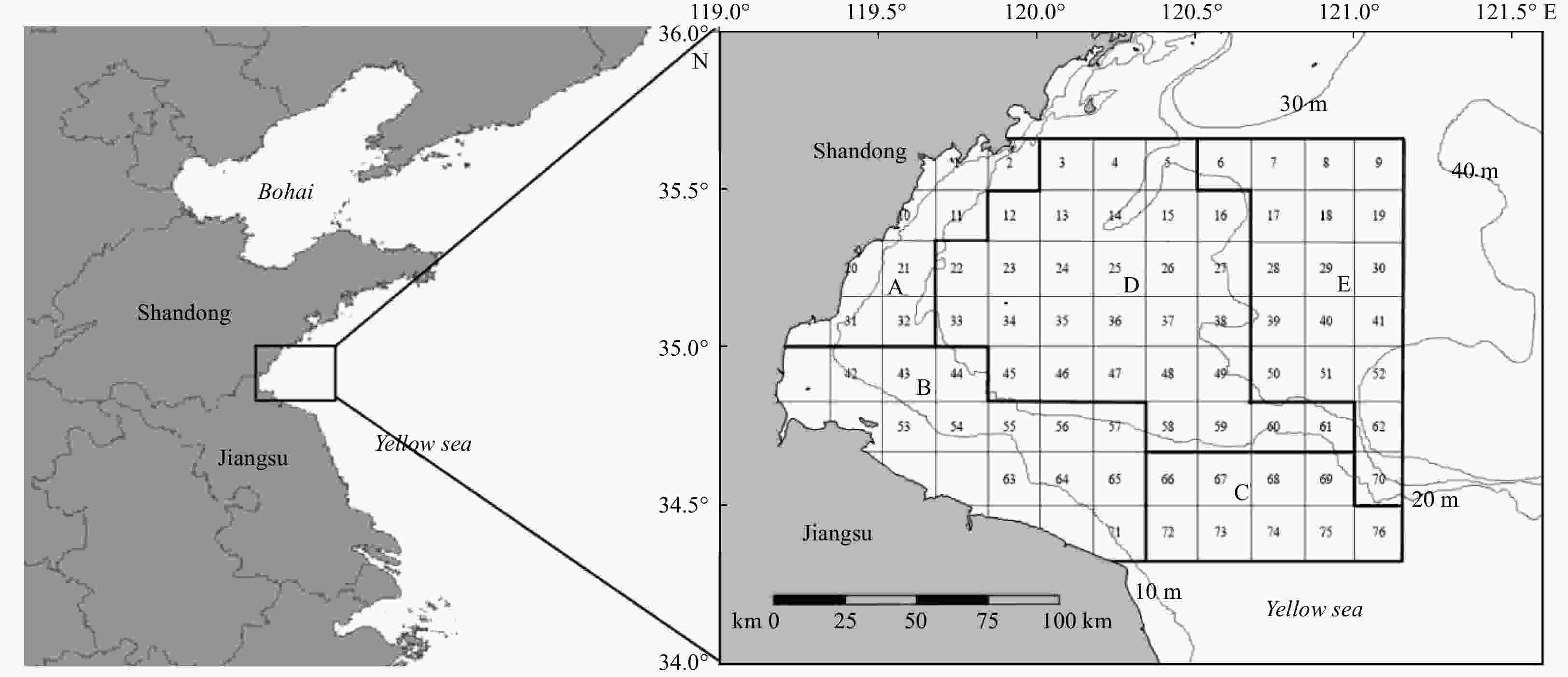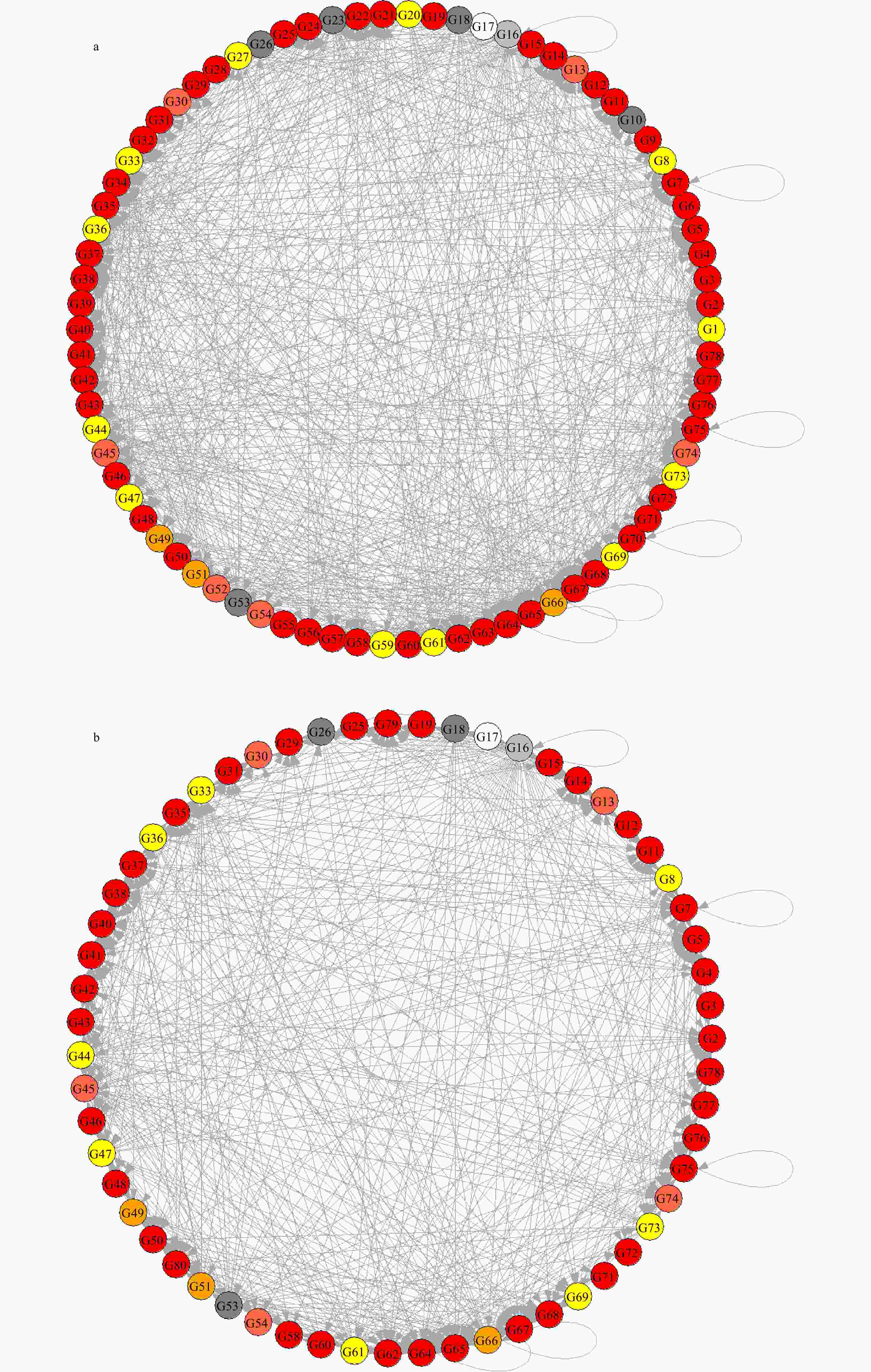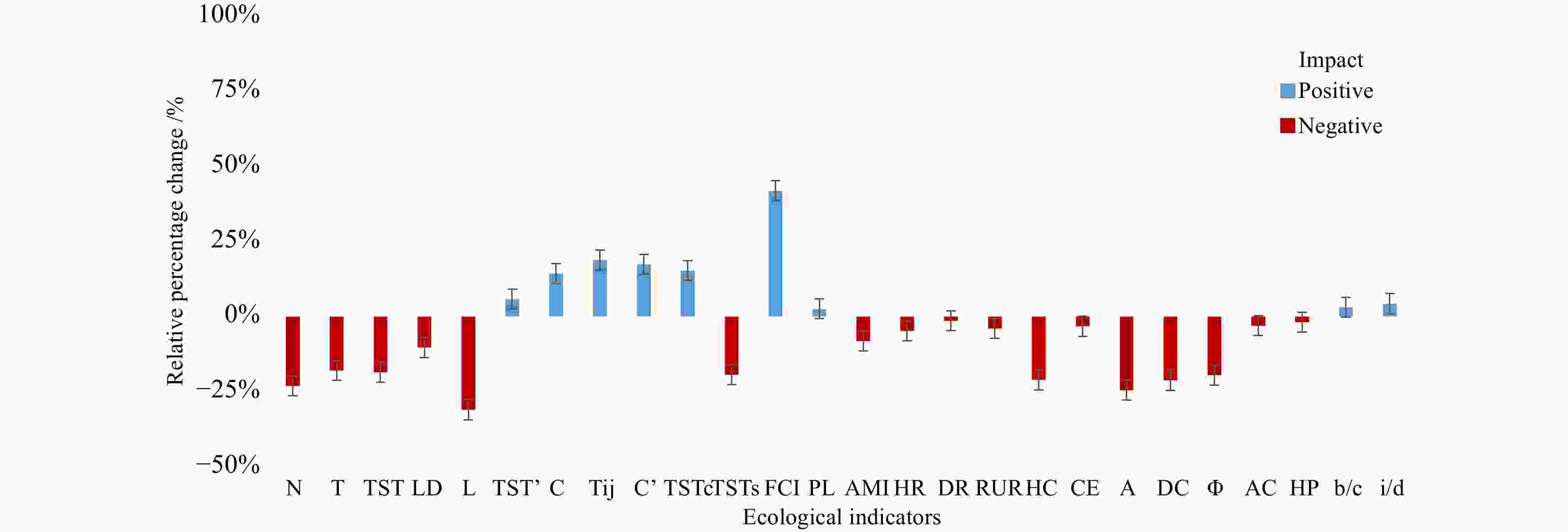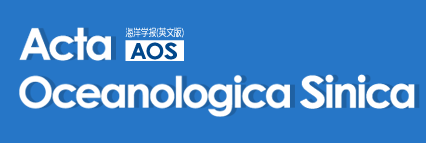-
Abstract: Climate change has led to significant fluctuations in marine ecosystems, including alterations in the structure and function of food webs and ecosystem status. Coastal ecosystems are critical to the functioning of the earth’s life-supporting systems. However, temporal variations in most of these ecosystems have remained unclear so far. In this study, we employed a linear inverse model with Markov Chain Monte Carlo (LIM-MCMC) combined with ecological network analysis (ENA) to reveal the temporal variations of the food web in Haizhou Bay of China. Food webs were constructed based on diet composition data in this ecosystem during the year of 2011 and 2018. Results indicated that there were obvious temporal variations in the composition of food webs in autumn of 2011 and 2018. The number of prey and predators for most species in food web decreased in 2018 compared with 2011, especially for Trichiurus lepturus, zooplankton, Amblychaeturichthys hexanema, and Loligo sp. ENA showed that the complexity of food web structure could be reflected by comprehensive analysis of compartmentalized indicators. Haizhou Bay ecosystem was more mature and stable in 2011, while the ecosystem’s self-sustainability and recovery from disturbances were accelerated from 2011 to 2018. These findings contribute to our understanding of the dynamics of marine ecosystems and highlight the importance of comprehensive analysis of marine food webs. This work provides a framework for assessing and comparing temporal variations in marine ecosystems, which provides essential information and scientific guidance for the Ecosystem-based Fisheries Management (EBFM).
-
Key words:
- LIM-MCMC /
- ecological network analysis /
- marine ecosystem /
- food web
-
Figure 2. Diet composition of species in Haizhou Bay food web in 2011 (a) and 2018 (b).
Note: The codes of G1-G80 are shown in Table 2. Different colors represent different groups, which are white (phytoplankton), gray (zooplankton), grayish (others), yellow (shrimps), orange (crabs), tomato (cephalopods), and red (fish).
Table 1. Ecological network analysis (ENA) indices analyzed in this study
Ecological network analysis (ENA) Name of indices Abbreviation General measures Number of compartments
Total system throughput
Total system throughflow
Link density
Number of links
Average compartment throughflow
Connectance
Average link weight
CompartmentalizationN
T
TST
LD
L
TST’
C
Tij
C’Pathway analysis Total system cycled throughflow
Total system non-cycled throughflow
Finn’s cycling index
Average path lengthTSTc
TSTs
FCI
PLNetwork uncertainty Average mutual information
Statistical uncertainty
Conditional uncertainty
Realized uncertainty
Network constraint
Constraint efficiencyAMI
HR
DR
RUR
HC
CESystem development and growth Ascendency
Development capacity
Overhead
Extent of developmentA
DC
$\varPhi $
ACEnvironment analysis Homogenization
Synergism index
Dominance indirect effectsHP
b/c
i/dTable 2. Food web composition in Haizhou Bay in autumn of 2011 and 2018
Code Species or taxa 2011 2018 Code Species or taxa 2011 2018 G1 Eualus sinensis √ G41 Johnius belangerii √ √ G2 Pennahia argentata √ √ G42 Amoya pflaumi √ √ G3 Pampus sp. √ √ G43 Other gobies √ √ G4 Thryssa kammalensis √ √ G44 Other shrimps √ √ G5 Hexagrammos otakii √ √ G45 Loligo sp. √ √ G6 Protosalanx hyalocranius √ G46 Sardinella zunas √ √ G7 Trichiurus lepturus √ √ G47 Alpheus japonicus √ √ G8 Metapenaeopsis dalei √ √ G48 Scomber japonicus √ √ G9 Coilia nasus √ G49 Charybdis japonica √ √ G10 Benthos √ G50 Soleidae sp. √ √ G11 Pagrus major √ √ G51 Charybdis bimaculata √ √ G12 Cottus sp. √ √ G52 Sepiola birostrata √ G13 Octopus ocellatus √ √ G53 Bivalvia √ √ G14 Enedrias fangi √ √ G54 Euprymna morsei √ √ G15 Coilia mystus √ √ G55 Azuma emmnion √ G16 Zooplankton √ √ G56 Engraulis japonicus √ G17 Phytoplankton √ √ G57 Thamnaconus modestus √ G18 Gastropods √ √ G58 Sillago sihama √ √ G19 Syngnathus acus √ √ G59 Leptochela gracilis √ G20 Metanephrops Challengeri √ G60 Jaydia lineata √ √ G21 Sebastiscus marmoratus √ G61 Alpheus distinguendus √ √ G22 Paralichthys olivaceus √ G62 Callionymus sp. √ √ G23 Annelida √ G63 Eupleurogrammus muticus √ G24 Nibea albiflora √ G64 Larimichthys polyactis √ √ G25 Setipinna tenuifilis √ √ G65 Chelidonichthys spinosus √ √ G26 Echinodermata √ √ G66 Other crabs √ √ G27 Crangon affinis √ G67 Conger myriaster √ √ G28 commersonii √ G68 Sebastes schlegelii √ √ G29 Pleuronichthys cornutus √ √ G69 Trachypenaeus curvirostris √ √ G30 Sepia esculenta √ √ G70 Platycephalus indicus √ G31 Sebastes hubbsi √ √ G71 Sphyraena pinguis √ √ G32 Raja porosa √ G72 Ammodytes personatus √ √ G33 Oratosquilla oratoria √ √ G73 Palaemon gravieri √ √ G34 Decapterus maruadsi √ G74 Octopus variabilis √ √ G35 Amblychaeturichthys hexanema √ √ G75 Saurida elongata √ √ G36 Acetes sp. √ √ G76 Myersina filifer √ √ G37 Chaemrichthys stigmatias √ √ G77 Thryssa mystax √ √ G38 Collichthys sp. √ √ G78 Tridentiger barbatus √ √ G39 Erisphex pottii √ G79 Lophius litulon √ G40 Miichthys miiuy √ √ G80 Liparis sp. √ Note: √ indicates the presence of the species or taxa. Table 3. Changes in the number of prey and predators for each species in the food web of Haizhou Bay in autumn of 2011 and 2018
Code Prey Predators Code Prey Predators 2011 2018 2011 2018 2011 2018 2011 2018 G1 4 / 19 / G41 19 15 10 9 G2 20 16 3 4 G42 5 4 6 6 G3 3 2 0 0 G43 12 9 9 6 G4 5 4 9 9 G44 7 5 38 33 G5 31 24 0 0 G45 16 11 27 24 G6 1 / 0 / G46 5 4 5 4 G7 28 20 2 1 G47 10 7 26 22 G8 4 3 18 20 G48 9 6 0 0 G9 4 / 0 / G49 7 6 4 3 G10 7 / 2 / G50 16 13 7 6 G11 15 12 1 0 G51 6 6 9 10 G12 1 1 0 0 G52 6 / 13 / G13 16 11 1 1 G53 2 2 41 36 G14 16 12 4 4 G54 6 4 1 1 G15 5 3 4 3 G55 1 / 0 / G16 2 2 62 52 G56 5 / 21 / G17 0 0 8 4 G57 9 / 0 / G18 2 2 35 31 G58 10 7 4 3 G19 1 1 0 0 G59 2 / 43 / G20 2 / 20 / G60 2 1 20 18 G21 12 / 1 / G61 9 6 24 21 G22 17 / 0 / G62 15 11 7 6 G23 2 / 37 / G63 5 / 0 / G24 14 / 0 / G64 30 23 11 10 G25 4 3 4 1 G65 32 26 0 0 G26 4 3 21 18 G66 7 6 34 30 G27 4 / 21 / G67 33 26 0 0 G28 1 / 0 / G68 16 12 1 1 G29 9 8 0 0 G69 12 8 15 12 G30 5 5 0 0 G70 5 / 2 / G31 9 6 0 0 G71 5 3 2 0 G32 15 / 0 / G72 4 3 2 1 G33 18 15 22 18 G73 5 3 23 23 G34 17 / 1 / G74 16 11 2 2 G35 20 13 15 13 G75 22 19 4 3 G36 2 2 26 21 G76 10 8 5 5 G37 18 13 16 14 G77 5 4 3 4 G38 17 13 6 4 G78 13 9 2 2 G39 4 / 0 / G79 / 14 / 0 G40 21 17 0 0 G80 / 16 / 0 Note: Italics indicate a change (decrease) of greater than 7 in the number of prey and predators of a species or taxa compared to 2011, and bold fonts indicate an increase in the number of predators. Table 4. Temporal variations in ENA indices in Haizhou Bay in autumn of 2011 and 2018
Ecological network analysis (ENA) Abbreviation Values 2011 2018 General measures N
T
TST
LD
L
TST’
C
Tij
C’78
30 070.17
43 535.31
12.12
945
558.15
0.14
31.82
0.2360
24 662.32
35 441.45
10.87
652
590.69
0.16
37.83
0.27Pathway analysis TSTc
TSTs
FCI
PL937.56
42 597.96
2.15
2.711081.01
34 360.44
3.05
2.78Network uncertainty AMI
HR
DR
RUR
HC
CE2.70
5.44
2.74
0.50
306.00
0.622.48
5.18
2.70
0.48
241.57
0.60System development and growth A
DC
$\varPhi $
AC81 230.64
246 482.26
165 251.63
0.3361 263.66
194 203.61
132 939.95
0.32Environment analysis HP
b/c
i/d2.15
0.97
6.832.11
1.00
7.12 -
Allen A P, Gillooly J F, Brown J H. 2005. Linking the global carbon cycle to individual metabolism. Functional Ecology, 19(2): 202–213, doi: 10.1111/j.1365-2435.2005.00952.x Anh P V, Everaert G, Goethals P, et al. 2015. Production and food web efficiency decrease as fishing activity increases in a coastal ecosystem. Estuarine, Coastal and Shelf Science, 165: 226–236 Beaugrand G, Edwards M, Raybaud V, et al. 2015. Future vulnerability of marine biodiversity compared with contemporary and past changes. Nature Climate Change, 5(7): 695–701, doi: 10.1038/nclimate2650 Bondavalli C, Bodini A, Rossetti G, et al. 2006. Detecting stress at the whole-ecosystem level: the case of a mountain lake (Lake Santo, Italy). Ecosystems, 9(5): 768–787, doi: 10.1007/s10021-005-0065-y Borrett S R. 2013. Throughflow centrality is a global indicator of the functional importance of species in ecosystems. Ecological Indicators, 32: 182–196, doi: 10.1016/j.ecolind.2013.03.014 Casini M, Lövgren J, Hjelm J, et al. 2008. Multi-level trophic cascades in a heavily exploited open marine ecosystem. Proceedings of the Royal Society B: Biological Sciences, 275(1644): 1793–1801, doi: 10.1098/rspb.2007.1752 Ceballos G, Ehrlich P R, Barnosky A D, et al. 2015. Accelerated modern human–induced species losses: Entering the sixth mass extinction. Science Advances, 1(5): e1400253, doi: 10.1126/sciadv.1400253 Chaalali A, Beaugrand G, Raybaud V, et al. 2016. From species distributions to ecosystem structure and function: a methodological perspective. Ecological Modelling, 334: 78–90, doi: 10.1016/j.ecolmodel.2016.04.022 Chaalali A, Saint-Béat B, Lassalle G, et al. 2015. A new modeling approach to define marine ecosystems food-web status with uncertainty assessment. Progress in Oceanography, 135: 37–47, doi: 10.1016/j.pocean.2015.03.012 Cheung W W L, Lam V W Y, Sarmiento J L, et al. 2009. Projecting global marine biodiversity impacts under climate change scenarios. Fish and Fisheries, 10(3): 235–251, doi: 10.1111/j.1467-2979.2008.00315.x Cloern J E, Abreu P C, Carstensen J, et al. 2016. Human activities and climate variability drive fast-paced change across the world’s estuarine–coastal ecosystems. Global Change Biology, 22(2): 513–529, doi: 10.1111/gcb.13059 Daniels R M, Richardson T L, Ducklow H W. 2006. Food web structure and biogeochemical processes during oceanic phytoplankton blooms: an inverse model analysis. Deep Sea Research Part II: Topical Studies in Oceanography, 53(5–7): 532–554, doi: 10.1016/j.dsr2.2006.01.016 De Laender F, Taub F B, Janssen C R. 2011. Ecosystem functions and densities of contributing functional groups respond in a different way to chemical stress. Environmental Toxicology and Chemistry, 30(12): 2892–2898, doi: 10.1002/etc.698 De Laender F, van Oevelen D, Soetaert K, et al. 2010. Carbon transfer in a herbivore- and microbial loop-dominated pelagic food webs in the southern Barents Sea during spring and summer. Marine Ecology Progress Series, 398: 93–107, doi: 10.3354/meps08335 DeLong J P, Gilbert B, Shurin J B, et al. 2015. The body size dependence of trophic cascades. The American Naturalist, 185(3): 354–366, doi: 10.1086/679735 Doney S C, Sailley S F. 2013. When an ecological regime shift is really just stochastic noise. Proceedings of the National Academy of Sciences of the United States of America, 110(7): 2438–2439 Dubois M, Gascuel D, Coll M, et al. 2019. Recovery debts can be revealed by ecosystem network-based approaches. Ecosystems, 22(3): 658–676, doi: 10.1007/s10021-018-0294-5 Dulvy N K, Rogers S I, Jennings S, et al. 2008. Climate change and deepening of the North Sea fish assemblage: a biotic indicator of warming seas. Journal of Applied Ecology, 45(4): 1029–1039, doi: 10.1111/j.1365-2664.2008.01488.x Dunne J A. 2009. Food webs. In: Meyers R A, ed. Encyclopedia of Complexity and Systems Science. New York: Springer-Verlag, 3661–3682 Eskuche-Keith P, Hill S L, Hollyman P, et al. 2023. Trophic structuring of modularity alters energy flow through marine food webs. Frontiers in Marine Science, 9: 1046150, doi: 10.3389/fmars.2022.1046150 Fath B D, Asmus H, Asmus R, et al. 2019. Ecological network analysis metrics: the need for an entire ecosystem approach in management and policy. Ocean & Coastal Management, 174: 1–14 Fath B D, Patten B C. 1998. Network synergism: emergence of positive relations in ecological systems. Ecological Modelling, 107(2–3): 127–143, doi: 10.1016/S0304-3800(97)00213-5 Fath B D, Patten B C. 1999a. Quantifying resource homogenization using network flow analysis. Ecological Modelling, 123(2–3): 193–205, doi: 10.1016/S0304-3800(99)00130-1 Fath B D, Patten B C. 1999b. Review of the foundations of network environ analysis. Ecosystems, 2(2): 167–179, doi: 10.1007/s100219900067 Feng Jianfeng, Zhu Lin, Wang Hongli. 2010. Study on characters of coastal ecosystem in Bohai Bay with EwE. Marine Environmental Science (in Chinese), 29(6): 781–784,803 Fernández-González C, Tarran G A, Schuback N, et al. 2022. Phytoplankton responses to changing temperature and nutrient availability are consistent across the tropical and subtropical Atlantic. Communications Biology, 5(1): 1035, doi: 10.1038/s42003-022-03971-z Fetahi T, Mengistou S. 2007. Trophic analysis of Lake Awassa (Ethiopia) using mass-balance Ecopath model. Ecological Modelling, 201(3–4): 398–408, doi: 10.1016/j.ecolmodel.2006.10.010 Finn J T. 1980. Flow analysis of models of the Hubbard Brook ecosystem. Ecology, 61(3): 562–571, doi: 10.2307/1937422 Forster J, Hirst A G, Atkinson D. 2012. Warming-induced reductions in body size are greater in aquatic than terrestrial species. Proceedings of the National Academy of Sciences of the United States of America, 109(47): 19310–19314 Friedland K D, Langan J A, Large S I, et al. 2020. Changes in higher trophic level productivity, diversity and niche space in a rapidly warming continental shelf ecosystem. Science of the Total Environment, 704: 135270, doi: 10.1016/j.scitotenv.2019.135270 Froese R, Pauly D. 2023. FishBase. World Wide Web electronic publication. http://www.fishbase.org [2023–02–17] Griffin L P, Adam P A, Fordham G, et al. 2021. Cooperative monitoring program for a catch-and-release recreational fishery in the Alphonse Island group, Seychelles: From data deficiencies to the foundation for science and management. Ocean & Coastal Management, 210: 105681 Griffiths S P, Young J W, Lansdell M J, et al. 2010. Ecological effects of longline fishing and climate change on the pelagic ecosystem off eastern Australia. Reviews in Fish Biology and Fisheries, 20(2): 239–272, doi: 10.1007/s11160-009-9157-7 Han Dongyan, Xue Ying, Zhang Chongliang, et al. 2017. A mass balanced model of trophic structure and energy flows of a semi-closed marine ecosystem. Acta Oceanologica Sinica, 36(10): 60–69, doi: 10.1007/s13131-017-1071-6 Hessen D O, Anderson T R. 2008. Excess carbon in aquatic organisms and ecosystems: physiological, ecological, and evolutionary implications. Limnology and Oceanography, 53(4): 1685–1696, doi: 10.4319/lo.2008.53.4.1685 Horn S, De La Vega C, Asmus R, et al. 2019. Impact of birds on intertidal food webs assessed with ecological network analysis. Estuarine, Coastal and Shelf Science, 219: 107–119 Johnson R W, McElhaney J. 2009. Postherpetic neuralgia in the elderly. International Journal of Clinical Practice, 63(9): 1386–1391, doi: 10.1111/j.1742-1241.2009.02089.x Julius R J, Novitsky M A, Dubin W R. 2009. Medication adherence: a review of the literature and implications for clinical practice. Journal of Psychiatric Practice, 15(1): 34–44, doi: 10.1097/01.pra.0000344917.43780.77 Kones J K, Soetaert K, van Oevelen D, et al. 2009. Are network indices robust indicators of food web functioning? A Monte Carlo approach. Ecological Modelling, 220(3): 370–382, doi: 10.1016/j.ecolmodel.2008.10.012 Krause A E, Frank K A, Mason D M, et al. 2003. Compartments revealed in food-web structure. Nature, 426(6964): 282–285, doi: 10.1038/nature02115 Latham L G. 2006. Network flow analysis algorithms. Ecological Modelling, 192(3–4): 586–600, doi: 10.1016/j.ecolmodel.2005.07.029 Layman C A, Giery S T, Buhler S, et al. 2015. A primer on the history of food web ecology: fundamental contributions of fourteen researchers. Food Webs, 4: 14–24, doi: 10.1016/j.fooweb.2015.07.001 Leguerrier D, Degré D, Niquil N. 2007. Network analysis and inter-ecosystem comparison of two intertidal mudflat food webs (Brouage Mudflat and Aiguillon Cove, SW France). Estuarine, Coastal and Shelf Science, 74(3): 403–418 Li Rui, Han Zhen, Cheng Heqin, et al. 2010. A preliminary study on biological resources energy flows bed on the ECOPATH model in the East China Sea. Resources Science (in Chinese), 32(4): 600–605 Li Zhonglu, Shan Xiujuan, Jin Xianshi, et al. 2015. Interannual variations in the biological characteristics, distribution and stock density of anglerfish Lophius litulon in the central and southern Yellow Sea. Acta Ecologica Sinica (in Chinese), 35(12): 4007–4015 Li Xuetong, Xu Binduo, Xue Ying, et al. 2021. Variation in the β diversity of fish species in Haizhou Bay. Journal of Fishery Sciences of China (in Chinese), 28(4): 451–459 Li Mingkun, Zhang Chongliang, Xu Binduo, et al. 2020. A comparison of GAM and GWR in modelling spatial distribution of Japanese mantis shrimp (Oratosquilla oratoria) in coastal waters. Estuarine, Coastal and Shelf Science, 244: 106928 Lin Qun, Jin Xianshi, Zhang Bo. 2013. Trophic interactions, ecosystem structure and function in the southern Yellow Sea. Chinese Journal of Oceanology and Limnology, 31(1): 46–58, doi: 10.1007/s00343-013-2013-6 Lin Qun, Jin Xianshi, Zhang Bo, et al. 2009. Comparative study on the changes of the Bohai Sea ecosystem structure based on Ecopath model between ten years. Acta Ecologica Sinica (in Chinese), 29(7): 3613–3620 Lin Qun, Wang Jun, Li Zhongyi, et al. 2018. Ecological carrying capacity of shellfish in the Yellow River estuary and its adjacent waters. Chinese Journal of Applied Ecology (in Chinese), 29(9): 3131–3138 Lin Qun, Wang Jun, Yuan Wei, et al. 2016. Effects of fishing and environmental change on the ecosystem of the Bohai Sea. Journal of Fishery Sciences of China (in Chinese), 23(3): 619–629 Liu Hongyan, Yang Chaojie, Zhang Peidong, et al. 2019. An Ecopath evaluation of system structure and function for the Laoshan Bay artificial reef zone ecosystem. Acta Ecologica Sinica (in Chinese), 39(11): 3926–3936 Liu Zhihao, Han Dongyan, Gao Chunxia, et al. 2021. Feeding habits of Bombay ducks (Harpadon nehereus) in the offshore waters of southern Zhejiang, based on predator CPUE weighting. Journal of Fishery Sciences of China (in Chinese), 28(4): 482–492 Marquis E, Niquil N, Delmas D, et al. 2007. Inverse analysis of the planktonic food web dynamics related to phytoplankton bloom development on the continental shelf of the Bay of Biscay, French coast. Estuarine, Coastal and Shelf Science, 73(1–2): 223–235 Mukherjee J, Scharler U M, Fath B D, et al. 2015. Measuring sensitivity of robustness and network indices for an estuarine food web model under perturbations. Ecological Modelling, 306: 160–173, doi: 10.1016/j.ecolmodel.2014.10.027 Navia A F, Maciel-Zapata S R, González-Acosta A F, et al. 2019. Importance of weak trophic interactions in the structure of the food web in La Paz Bay, southern Gulf of California: a topological approach. Bulletin of Marine Science, 95(2): 199–215, doi: 10.5343/bms.2018.0043 Nuttall M A, Jordaan A, Cerrato R M, et al. 2011. Identifying 120 years of decline in ecosystem structure and maturity of Great South Bay, New York using the Ecopath modelling approach. Ecological Modelling, 222(18): 3335–3345, doi: 10.1016/j.ecolmodel.2011.07.004 Olsen Y, Andersen T, Gismervik I, et al. 2007. Protozoan and metazoan zooplankton-mediated carbon flows in nutrient-enriched coastal planktonic communities. Marine Ecology Progress Series, 331: 67–83, doi: 10.3354/meps331067 Parmesan C. 2006. Ecological and evolutionary responses to recent climate change. Annual Review of Ecology, Evolution, and Systematics, 37: 637–669 Parmesan C, Yohe G. 2003. A globally coherent fingerprint of climate change impacts across natural systems. Nature, 421(6918): 37–42, doi: 10.1038/nature01286 Perry A L, Low P J, Ellis J R, et al. 2005. Climate change and distribution shifts in marine fishes. Science, 308(5730): 1912–1915, doi: 10.1126/science.1111322 Pimm S L, Lawton J H. 1980. Are food webs divided into compartments?. The Journal of Animal Ecology, 49(3): 879–898, doi: 10.2307/4233 Poloczanska E S, Brown C J, Sydeman W J, et al. 2013. Global imprint of climate change on marine life. Nature Climate Change, 3(10): 919–925, doi: 10.1038/nclimate1958 Ren Xiaoming, Liu Yang, Xu Binduo, et al. 2020. Ecosystem structure in the Haizhou Bay and adjacent waters based on Ecopath model. Haiyang Xuebao (in Chinese), 42(6): 101–109 Rooney N, McCann K S. 2012. Integrating food web diversity, structure and stability. Trends in Ecology & Evolution, 27(1): 40–46 Rose K A, Allen J I, Artioli Y, et al. 2010. End-to-end models for the analysis of marine ecosystems: Challenges, issues, and next steps. Marine and Coastal Fisheries: Dynamics, Management, and Ecosystem Science, 2(1): 115–130 Rybarczyk H, Elkaı̈m B. 2003. An analysis of the trophic network of a macrotidal estuary: the Seine Estuary (Eastern Channel, Normandy, France). Estuarine, Coastal and Shelf Science, 58(4): 775–791 Safi G, Giebels D, Arroyo N L, et al. 2019. Vitamine ENA: a framework for the development of ecosystem-based indicators for decision makers. Ocean & Coastal Management, 174: 116–130 Savenkoff C, Castonguay M, Chabot D, et al. 2007. Changes in the northern Gulf of St. Lawrence ecosystem estimated by inverse modelling: Evidence of a fishery-induced regime shift?. Estuarine, Coastal and Shelf Science, 73(3–4): 711–724 Sheng Fuli, Zeng Xiaoqi, Xue Ying. 2009. Study on propagation and feeding habits of Oratosquilla oratoria in the inshore waters of Qingdao. Periodical of Ocean University of China (in Chinese), 39(S1): 326–332 Soetaert K, van den Meersche K, van Oevelen D, et al. 2009. limSolve: Solving linear inverse models.https://cran.r-project.org/web//packages/limSolve/limSolve.pdf [2022–10–13] Soetaert K, van Oevelen D. 2009. LIM: linear inverse model examples and solution methods.https://cran.r-project.org/web/packages/LIM/index.html [2022–05–11] Song Yehui, Xue Ying, Xu Binduo, et al. 2020. Composition of food and niche overlap of three Sciaenidae species in Haizhou Bay. Journal of Fisheries of China (in Chinese), 40(12): 2017–2027 Van Oevelen D, van den Meersche K, Meysman F J R, et al. 2010. Quantifying food web flows using linear inverse models. Ecosystems, 13(1): 32–45, doi: 10.1007/s10021-009-9297-6 Vasconcellos M, Mackinson S, Sloman K, et al. 1997. The stability of trophic mass-balance models of marine ecosystems: a comparative analysis. Ecological Modelling, 100(1–3): 125–134, doi: 10.1016/S0304-3800(97)00150-6 Vasseur D A, McCann K S. 2005. A mechanistic approach for modeling temperature-dependent consumer-resource dynamics. The American Naturalist, 166(2): 184–198, doi: 10.1086/431285 Vézina A F, Platt T. 1988. Food web dynamics in the ocean. I. Best-estimates of flow networks using inverse methods. Marine Ecology Progress Series, 42(3): 269–287 Wang Yuanchao, Liang Cui, Xian Weiwei, et al. 2018. Ecopath based dynamic analyses of energy flows of Yangtze estuary and its adjacent waters. Marine Sciences (in Chinese), 42(5): 54–67 Wang Sai, Wang Lin, Zheng Yu, et al. 2019. Application of mass-balance modelling to assess the effects of ecological restoration on energy flows in a subtropical reservoir, China. Science of the Total Environment, 664: 780–792, doi: 10.1016/j.scitotenv.2019.01.334 Wei Jingjing. 2015. A preliminary study on microbial community structures and their influencing factors in the Western Pacific waters (in Chinese) [dissertation]. Xiamen: Xiamen University Wu Xiaotong, Ding Xiangxiang, Jiang Xu, et al. 2019. Variations in the mean trophic level and large fish index of fish community in Haizhou Bay, China. Chinese Journal of Applied Ecology (in Chinese), 30(8): 2829–2836 Xing Lei, Chen Yong, Tanaka K R, et al. 2022. Evaluating the hatchery program of a highly exploited shrimp stock (Fenneropenaeus chinensis) in a temperate marine ecosystem. Frontiers in Marine Science, 9: 789805, doi: 10.3389/fmars.2022.789805 Xu Binduo, Ren Yiping, Chen Yong, et al. 2015. Optimization of stratification scheme for a fishery-independent survey with multiple objectives. Acta Oceanologica Sinica, 34(12): 154–169, doi: 10.1007/s13131-015-0739-z Xu Congjun, Sui Haozhi, Xu Binduo, et al. 2021. Energy flows in the Haizhou Bay food web based on the LIM-MCMC model. Journal of Fishery Sciences of China (in Chinese), 28(1): 66–78 Xu Xue, Tang Weiyao, Wang Yingbin. 2019. Releasing capacity of Portunus trituberculatus enhancement in Zhoushan fishing ground and Yangtze river estuary fishing ground and their adjacent waters. South China Fisheries Science (in Chinese), 15(3): 126–132 Xu Chao, Wang Sikai, Zhao Feng, et al. 2018. Trophic structure and energy flow of the Yangtze Estuary ecosystem based on the analysis with Ecopath model. Marine Fisheries (in Chinese), 40(3): 309–318 Xue Ying. 2005. Studies on the feeding ecology of dominant fishes and food web of fishes in the central and southern Yellow Sea (in Chinese) [dissertation]. Qingdao: Ocean University of China Yang Tao, Shan Xiujuan, Jin Xianshi, et al. 2018. Long-term changes in keystone species in fish community in spring in Laizhou Bay. Progress in Fishery Sciences (in Chinese), 39(1): 1–11 Yin Jie, Xu Jun, Xue Ying, et al. 2021. Evaluating the impacts of El Niño events on a marine bay ecosystem based on selected ecological network indicators. Science of the Total Environment, 763: 144205, doi: 10.1016/j.scitotenv.2020.144205 Yoneda M, Tokimura M, Fujita H, et al. 2001. Reproductive cycle, fecundity, and seasonal distribution of the anglerfish Lophius litulon in the East China and Yellow seas. Fishery Bulletin, 99(2): 356–370 Yuan Xingwei, Jiang Yazhou, Gao Xiaodi, et al. 2023. Spatiotemporal distribution of Lophius litulon in the southern Yellow Sea and East China Sea. Chinese Journal of Applied Ecology (in Chinese), 34(2): 519–526 Yuan Jianmei, Zhang Hu, Ben Chengkai, et al. 2018. Macrobenthic community composition and it’s secondary productivity in the Haizhou Bay. Marine Fisheries (in Chinese), 40(1): 19–26 Yvon-Durocher G, Montoya J M, Trimmer M, et al. 2011. Warming alters the size spectrum and shifts the distribution of biomass in freshwater ecosystems. Global Change Biology, 17(4): 1681–1694, doi: 10.1111/j.1365-2486.2010.02321.x Zhang Chongliang, Chen Yong, Ren Yiping. 2015. Assessing uncertainty of a multispecies size-spectrum model resulting from process and observation errors. ICES Journal of Marine Science, 72(8): 2223–2233, doi: 10.1093/icesjms/fsv086 Zhang Wuchang, Zhang Cuixia, Wang Rong, et al. 2011. Grazing pressure of microzooplankton on phytoplankton in spring and autumn in the Yellow Sea and East China Sea. Marine Sciences (in Chinese), 35(1): 36–39 -

 点击查看大图
点击查看大图
计量
- 文章访问数: 99
- HTML全文浏览量: 43
- 被引次数: 0




 下载:
下载:



